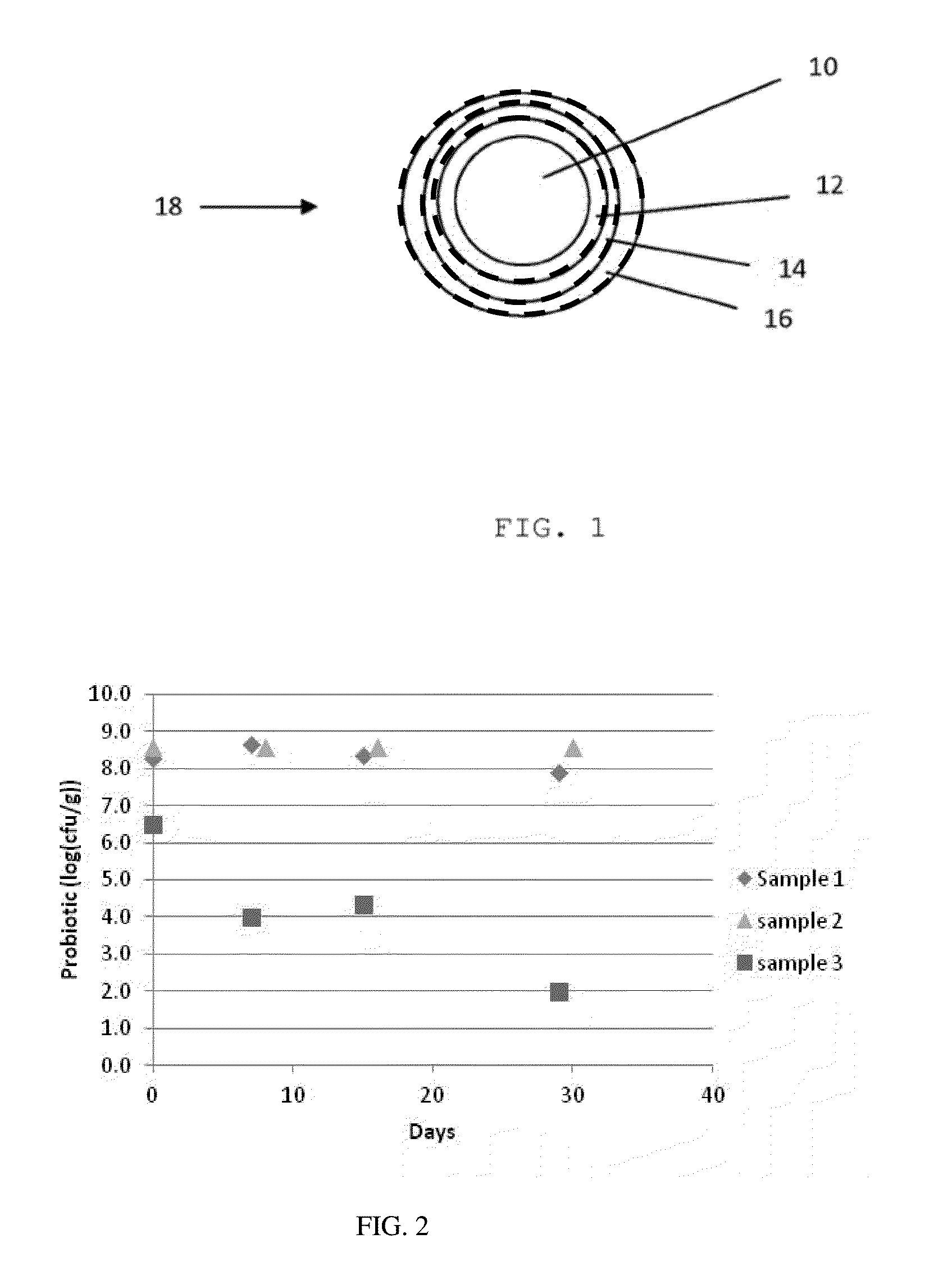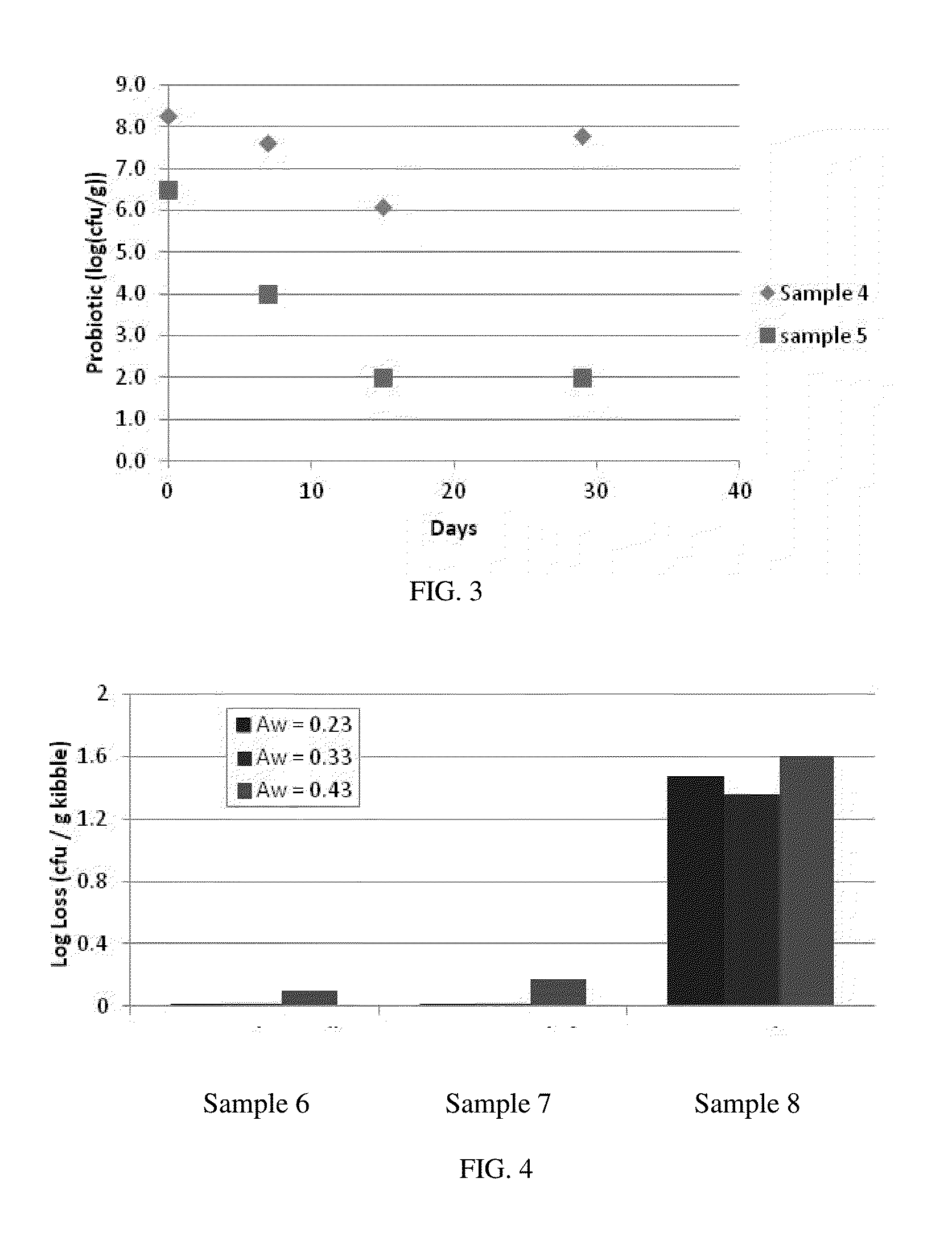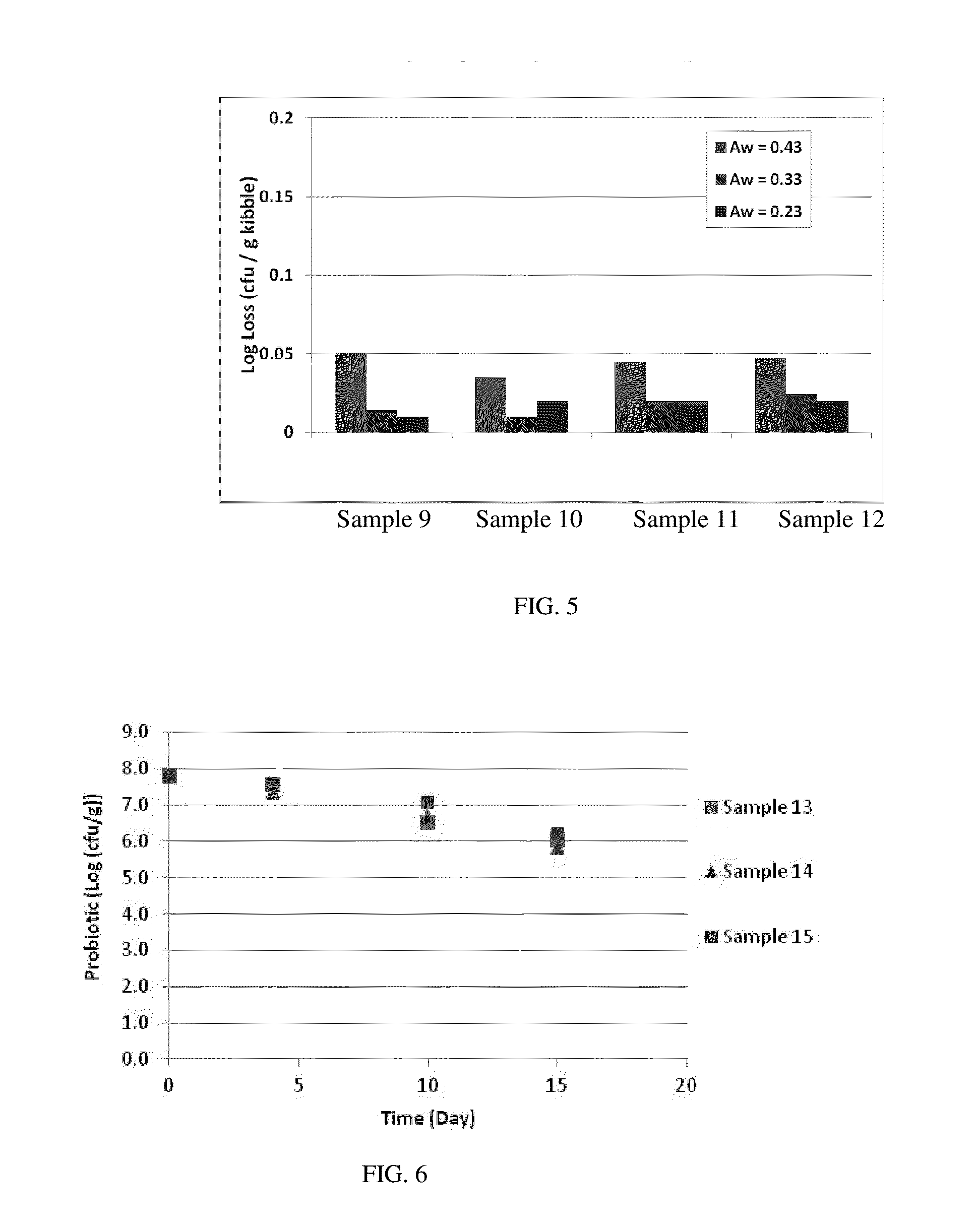Pet food composition having probiotic bifidobacterium animalis
a technology of probiotics and food compositions, which is applied in the field of pet food compositions containing probiotics, can solve the problems of reducing the population of bacterial diseases, affecting the product, and affecting the health of the produ
- Summary
- Abstract
- Description
- Claims
- Application Information
AI Technical Summary
Benefits of technology
Problems solved by technology
Method used
Image
Examples
example 1
[0066]As a coating AHC-7 probiotic is expected to be in direct contact with kibble raw material and other coatings, such as flavoring agents, fat, palatant, and any other ingredient applied externally for improvement of texture like glycerin or emulsifiers. In order to understand the impact on AHC-7 caused by interaction with other materials several samples were prepared at appropriate ratios; the samples comprised AHC-7 probiotic and one coating component, which comprised either chicken fat, dry palatant (SPF 336) or glycerin.
[0067]Sample 1 was a mixture of AHC-7 raw material (AHC-7 raw material comprised AHC-7 (probiotic) and maltodextrin (carrier) in an amount sufficient enough to achieve target AHC-7 concentration of around 1011 cfu / g) and palatant 336 (ratio approximately 1:295). Sample 2 was a mixture of AHC-7 raw material and chicken fat containing antioxidant (ratio approximately 1:1086). Sample 3 was a mixture of AHC-7 raw material and glycerin (ratio approximately 1:2090)....
example 2
[0068]To determine stability of AHC-7 probiotic in the presence of other coating components at higher temperature (40° C.) another set of samples were made just like EXAMPLE 1. Sample 4 was a mixture of AHC-7 raw material (AHC-7 raw material is AHC-7 (probiotic) and maltodextrin (carrier)) added sufficient enough to achieve target AHC-7 concentration of around 1011 cfu / g) and chicken fat containing antioxidant (ratio approximately 1:1086). Sample 5 was a mixture of AHC-7 raw material and glycerin (ratio approximately 1:2090). This example is without palatant To avoid error due to mixing and improve accuracy of measurement, for each Sample (4 and 5) four separate sample sets (four for Sample 4 and four for Sample 5), comprising 50 ml plastic tubes loaded with 10 g of Sample each, were prepared for four pull times. The Samples 4 and 5 in a plastic tube were mixed thoroughly on vortex type of mixer at room temperature and tube was later sealed using a plastic cap. Samples 4 and 5 (4 tu...
example 3
[0069]To determine if coating has an effect on probiotic stability, various samples were prepared with different kibble coatings. First kibble was produced by extrusion of ingredients listed in TABLE 1 which delivered a kibble with a fat and protein content of 13% and 28% respectively. For kibble making, the dry ingredients (listed in TABLE 1) were blended in batches of 1000 kg for around 20 min using a Hobart® blender (model V-1401; Hobart, Troy, Ohio) to achieve reasonable homogeneity in the blend prior to processing. The blend of ingredients was transferred to a pre-conditioner cylinder, where the materials were mixed at 95° C. for 3 min with sufficient steam / water (approximately 21% water) to partially gelatinize starches and soften and hydrate all ingredients. The hydrated blend of ingredients was then extruded with a single screw extruder, with a barrel temperature ranging from 90° C. to 140° C. across the different extruder barrel zones (1-6). The diameter of the die used to ...
PUM
 Login to View More
Login to View More Abstract
Description
Claims
Application Information
 Login to View More
Login to View More - R&D
- Intellectual Property
- Life Sciences
- Materials
- Tech Scout
- Unparalleled Data Quality
- Higher Quality Content
- 60% Fewer Hallucinations
Browse by: Latest US Patents, China's latest patents, Technical Efficacy Thesaurus, Application Domain, Technology Topic, Popular Technical Reports.
© 2025 PatSnap. All rights reserved.Legal|Privacy policy|Modern Slavery Act Transparency Statement|Sitemap|About US| Contact US: help@patsnap.com



